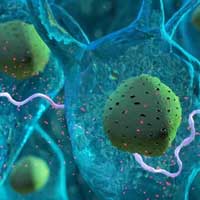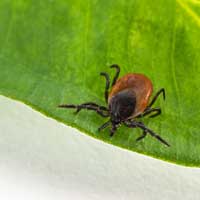Envita Featured in The New York Times for Lyme Disease Treatment

It is no secret that summer is building up to be especially warm this year. For many places, this means an expanded opportunity for outdoor recreation and sports. Unfortunately for everyone trying to get out doors this year, 2017 is turning out to have the worst outbreak of ticks in recent history.
These blood-sucking parasites thrive in the warm weather and feed by crawling to the tips of long grasses where they can latch onto any unknowing host that walks by, be it mouse, deer, or human. This has proven especially detrimental to golfers who frequently run across patches of long grass that can be hot spots for ticks. And as if the thought of a parasite attaching itself to your body wasn't bad enough, the truly terrifying part of this epidemic are the insidious diseases that ticks can carry. Chief among these is Lyme disease.
You may have already heard of the spread of tick-borne ailments such as Powassan which claimed the life of a young child earlier this year. Lyme disease is a slower acting, but far more difficult to treat infection which is also spread by the bite of a tick. It is also no less detrimental to life and wellbeing than Powassan, just ask professional golfer Jimmy Walker. Walker, who won the P.G.A. championship last July, received a diagnosis of Lyme disease in April, but it came as a relief after struggling with prolonged symptoms for the better part of a year. After suffering from what feels like intense flu-like symptoms every other week, Walker said, “[The diagnosis] stunk, but it was nice because you can treat it.” Receiving a diagnosis of Lyme can be difficult because the symptoms mimic those of other, more common diseases. The symptoms also affect mood, usually coming in the form of irritability or profound fatigue. Players like Walker often try to push through their symptoms, not even realizing they are ill, only for their symptoms to worsen over time.
John Oertle, a Lyme disease specialist from Envita Medical Centers, located in Scottsdale, Arizona, spoke to The New York Times on the importance of recognizing Lyme for the threat that it is and for the use of proper diagnostic techniques as well as beginning treatment as soon as possible after a diagnosis is confirmed. “It becomes this downward spiral,” Oertle explained, “It can become almost a deterioration of the body from the inside out.”
Dr. Oertle and the other physicians at Envita Medical Centers are dedicated to combating the threat of Lyme disease, which this year may indeed reach epidemic levels with the recent explosion in the population of ticks across America. The most important part of halting the spread is increasing awareness of Lyme among people exposed to it. As mentioned previously, the symptoms of Lyme tend to mimic those of other diseases, especially the flu, but Lyme is recurrent and the symptoms tend to worsen over time and include mood changes as well as “mind fog.” If you suspect yourself of having Lyme, especially if you have been exposed to areas that may have ticks recently, you should have yourself tested as soon as possible, as the treatment tends to be more effective sooner after the onset of infection than later. Also, if you live or walk through areas prone to ticks, you should check your body and clothing daily for ticks.
Envita Medical Centers recognizes the threat that this disease poses to the wellbeing of millions of individuals across the country and we intend to be the number one source of information when it comes to recognizing the signs of Lyme disease as well as treating it. We see patients from every walk of life and are proud to have already helped thousands of our patients recover and lead better lives. Remember, it is up to you to take your health into your own hands and information is your key weapon. Don't wait and educate yourself today. Give us a call at 1-866-830-4576 and one of our trained patient care coordinators will be more than happy to answer any questions you may have on Lyme disease diagnosis and treatment options. Click here to read the full article.















